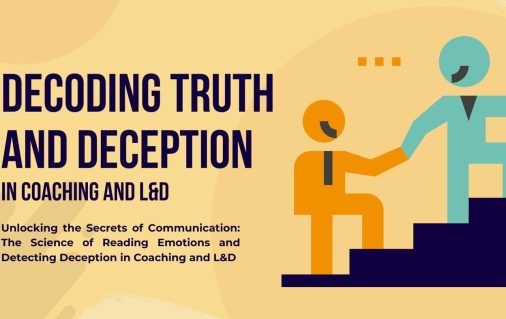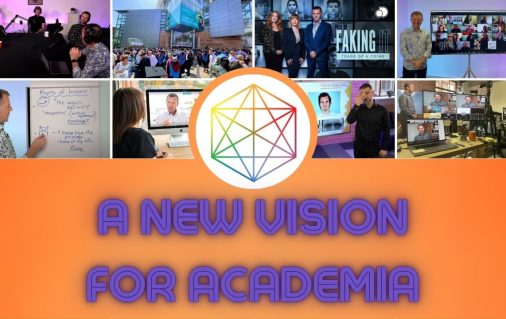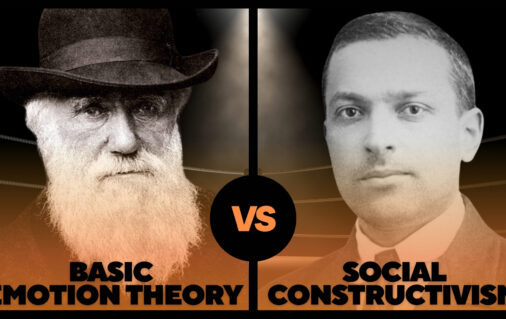Conclusion / References
Conclusion
Emotional intelligence is still in its infancy, but its significance across all domains of life is undeniable. As we continue to explore this valuable area of science, seeking answers to the questions we have, we can become part of a new wave of pioneering emotional intelligence research within the humanities.
References
Antonietti, J. P., Fiori, M., Hansenne, M., Luminet, O., Mikolajczak, M., Rossier, J. (2014). What is the Ability Emotional Intelligence Test Good for? An Evaluation Using Item Response Theory. PLO ONE, 9 (6).
Austin, E. J. (2010). Measurement of ability emotional intelligence: Results for two new tests. British Journal of Psychology, 101, 563-578.
Bauer, P. C., & Freitag, M. (2017). Measuring trust. The Oxford Handbook of Social and Political Trust, (March), 15–36. https://doi.org/10.1093/oxfordhb/9780190274801.013.1
Cronbach, L. J. (1949). Essentials of psychological testing. New York: Harper & Row.
Darwin, C. (1872) In: The Expression of Emotions in Man and Animals. Murray John. editor. Univ. of Chicago Press.
Ekman, P. (1993). Facial expression and emotion. Am Psychol. 48(4), 384-92.
Ekman, P. (1985). Telling Lies: Clues to Deceit in the Marketplace, Politics, and Marriage. New York: W.W. Norton.
Ekman, P. (2007). Emotions revealed: Recognizing faces and feelings to improve communication and emotional life. New York: Henry Holt.
Ekman, P., Frank, M. G. (1997). ‘The Ability to Detect Deceit Generalizes Across Different Types of High-Stake Lies’. Journal of Personality and Social Psychology, 72(6), 1429-1439.
Epstein, S. (1994). ‘Integration of the cognitive and the psychodynamic unconscious.’ The American Psychologist, 49(8), pp. 709-724.
Freudenthaler, H. H., Neubauer, A. C., Haller, U. (2008). Emotional intelligence: Instruction effects and sex differences in emotional management abilities. Journal of Individual Differences, 29, 105-115.
Gardner, H. (1999). Intelligence reframed: Multiple intelligences for the 21st century. New York : Basic Books.
Goleman, D. (1995) Emotional Intelligence. ed. 2020 London: Bloomsbury Publishing.
Gottfredson, L. S. (1998) The General Intelligence Factor. Scientific American, Inc. [Online] http://www.hucama.com/wp-content/uploads/2017/11/g-factor-intellligence-1998.pdf
Greene, R., & Elffers, J. (2000). The 48 laws of power.
Heyes, C. (2010). Mesmerizing mirror neurons. Neuroimage, 51 (2010), 789-791
Hodson, G., Book, A., Visser, B. A., Volk, A. A., Ashton, M. C., & Lee, K. (2018). Is the Dark Triad common factor distinct from low Honesty-Humility? Journal of Research in Personality, 73, 123–129. https://doi.org/10.1016/j.jrp.2017.11.012
Hofstee, W. K. B. (2001). Personality and intelligence: Do they mix? In Collis, J. M., Messick, S. (Eds.), Intelligence and personality: Bridging the gap in theory and measurement (pp. 43 – 60 ). Mahwah, NJ: Lawrence Erlbaum Associates.
Jakobwitz, S., & Egan, V. (2006). The dark triad and normal personality traits. Personality and Individual Differences, 40(2), 331-339.
Jensen, A. R. (1998) The g Factor: The Science of Mental Ability. Westport, CT: Praeger/Greenwood.
Jones, D. N., & Paulhus, D. L. (2017). Duplicity among the dark triad: Three faces of deceit. Journal of Personality and Social Psychology, 113(2), 329-342.
Kashy, D. A., & DePaulo, B. M. (1996). Who lies?. Journal of Personality and Social Psychology, 70(5), 1037.
Larsen, J.T., Norris, C.J., McGraw, A.P., Hawkley, L.C., Cacioppo, J.T. (2009). The evaluative space grid: A single-item measure of positivity and negativity. Cognition Emotion 23, 453–480.
Landry, L. (2019) Emotional Intelligence in Leadership: Why It’s Important. Harvard Business School Online.
Lieberman, M. D. (2013). Social: Why our brains are wired to connect. Crown Publishers/Random House.
Lloyd, A. C. (1978) ‘Emotion and decision in stoic psychology.’ In Rist, J. M. (ed.) The stoics, Los Angeles: University of California Press, pp. 233-246.
Matthews, G., Zeidner, M., Roberts, R. D. (2007). Emotional intelligence: Consensus, controversies, and questions. In G. Matthews, M. Zeidner, R. D. Roberts (Eds.), The science of emotional intelligence: Knowns and unknowns (pp. 3-46). Oxford: Oxford University Press.
Maul, A. (2012). The validity of the Mayer-Salovey-Caruso emotional intelligence test (MSCEIT) as a measure of emotional intelligence. Emotion Review 4, 394– 402.
Mayer, J.D., Caruso, D., Salovey, P. (1999). Emotional intelligence meets traditional standards for an intelligence. Intelligence 27, 267–298.
Mayer, J.D., Caruso, D., Salovey, P. (2000). Emotional intelligence meets traditional standards for an intelligence. Intelligence, 27, 267–298.
Mayer, J. D., Salovey, P., Caruso, D. R. (2002). Mayer-Salovey-Caruso Emotional Intelligence Test (MSCEIT): User’s manual. Toronto, Ontario: Multi-Health Systems, Inc.
Mayer, J.D., Salovey, P., Caruso, D.R., Sitarenios, G. (2003). Measuring emotional intelligence with the MSCEIT V2.0. Emotion 2, 97–105.
Mayer, J.D., Salovey, P., Caruso, D.R. (2012). The validity of the MSCEIT: Additional analyses and evidence. Emotion Review 4, 403–408.
Mayer, J.D., Caruso, D.R. and Salovey, P., (2016). ‘The Ability Model of Emotional Intelligence: Principles and Updates’. Emotion Review, 8(4), pp.290–300.
Mead, G. H. (1934). Mind, Self, and Society. Chicago: University of Chicago Press.
Miao, C., Coombs, J. E., Qian, S. and Sirmon, D. G. (2017) ‘The mediating role of entrepreneurial orientation: A meta-analysis of resource orchestration and cultural contingencies.’ Journal of Business Research, 77, pp. 68–80.
Miao, C., Humphrey, R. H. and Qian, S. (2017) ‘A meta-analysis of emotional intelligence effects on job satisfaction mediated by job resources, and a test of moderators.’ Personality and Individual Differences, 116(116) pp. 281–288.
Muris, P., Merckelbach, H., Otgaar, H., & Meijer, E. (2017). The Malevolent side of human nature: A meta-analysis and critical review of the literature on the dark triad (Narcissism). Perspectives on Psychological Science, 12(2), 183–204. https://doi.org/10.1177/1745691616666070
O ’ Sullivan, M. (2007). Trolling for trout, trawling for tuna: The methodological morass in measuring emotional intelligence. In G. Matthews, M. Zeidner, R. Roberts (Eds.),Emotional intelligence: Knowns and unknowns (pp. 258-287). Oxford: Oxford University Press.
O ’ Sullivan , M., Ekman, P. (2004). Facial expression recognition and emotional intelligence. In G. Geher (Ed.), Measuring emotional intelligence: Common ground and controversy (pp. 91 – 111 ). Hauppauge, NY: Nova Science Publishing.
Petrides KV (2011) Ability and Trait emotional intelligence. In Chamorro- Premuzic T, von Stumm S, Furnham A, editors. The Wiley-Blackwell handbook of individual differences. New York: Wiley-Blackwell. 656–678.
Paulhus, D. L., & Williams, K. M. (2002). The dark triad of personality: Narcissism, Machiavellianism, and psychopathy. Journal of Research in Personality, 36(6), 556-563.
Piaget, J. (1932). The moral judgment of the child. London: Routledge & Kegan Paul.
Piaget, J. (1936). Origins of intelligence in the child. London: Routledge & Kegan Paul.
Piaget, J. (1945). Play, dreams and imitation in childhood. London: Heinemann.
Piaget, J. (1957). Construction of reality in the child. London: Routledge & Kegan Paul.
Piaget, J., & Cook, M. T. (1952). The origins of intelligence in children. New York, NY: International University Press.
Rathore, D., Chadha, N.K. (2015). Ability and Trait Models of Emotional Intelligence. Recent Advances in Psychology. (2). 29-36.
Thorndike, E. L. (1920). Intelligence and its uses. Harper’s Magazine, 140, 227–235.
Walter, F., Humphrey, R. H. and Cole, M. S. (2012) ‘Unleashing leadership potential’, Organizational Dynamics, 41(3) pp. 212–219.
Wilhelm, O. (2005). Measures of emotional intelligence: Practice and standards. In R. Schulze, R. D. Roberts. (Eds.), International handbook of emotional intelligence (pp. 131-154). Seattle, WA : Hogrefe & Huber.
















